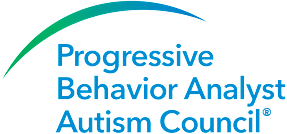Exam Content Outline
The Exam Content Outline for the Certified Progressive Behavior Analyst-Autism Professional® provides an overview of exam content across ten different domains. Learning Objectives for each of the domains is also specified in this document.
Code of Ethics
This Code of Ethics is intended to provide specific standards to cover situations encountered by Certified Progressive Behavior Analyst-Autism Professionals® (CPBA-APs®). It is meant to ensure that clients are treated with dignity, integrity, and are free from harm. CPBA-APs® are committed to a scientific philosophy and the use of objective data. CPBA-APs® are committed to a progressive approach to conducting research and applying research findings to the provision of treatment for individuals diagnosed with autism spectrum disorder (ASD). CPBA-APs® are committed to providing intervention that develops meaningful and socially significant behaviors that will improve their clients’ quality of life. CPBA-APs® respect and protect civil and human rights while providing the greatest opportunity for development of client potential. This code of ethics provides a common set of principles and standards upon which CPBA-APs® build their professional and scientific work.
Reference List
The Reference List document provides an overview of sources related to potential exam content, including, but not limited to, behavior analytic books, book chapters, peer-reviewed articles, and peer-reviewed research.
Sample Questions
Here you will find examples of the types of questions you may see on the Multiple Choice Examination.
Standard Setting for MCQ Examination
A modified Angoff method was used to determine the passing score of the CPBA-AP® multiple choice exam.
These steps included:
- Confidentiality review
- Review job role/certification information
- Describe levels of competence
- Experts take the test
- Rate items
- Review item ratings
- Recommend the passing standard
- Setting the passing standard
The standard setting method followed by the PBAAC is embedded/implicit in the rubric with the anchors provided (Johnson, Penny, & Gordon, 2009, p. 263). The steps followed were as follows:
- Reviewed AP program eligibility requirements.
- Reviewed the rubric and its domains and definitions.
- Reviewed the subdomains with each domain and the example categorized behaviors that match the performance standard for the domains being assessed.
- Reviewed key considerations for setting passing standards.
- Reviewed the unequal number of subdomains within domains.
- Considered the compensatory nature of each domain with each other. Determined if there are any domains that were non-compensatory and required a passing score for the domain to pass the assessment, regardless of scores on the other domains.
- Determined if there are fatal flaws in the subdomains within a domain that placed scoring or passing requirements within each domain.
- Determined the total weight each domain provided to contribute to a whole score.
- Reviewed computations of sample scoring and finalized through the council’s voting procedure.
